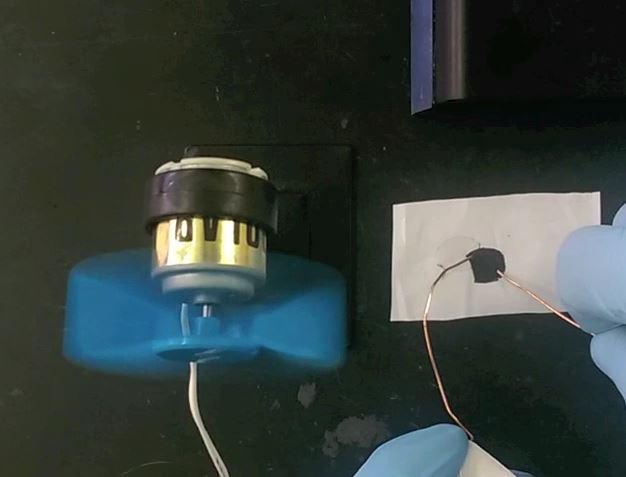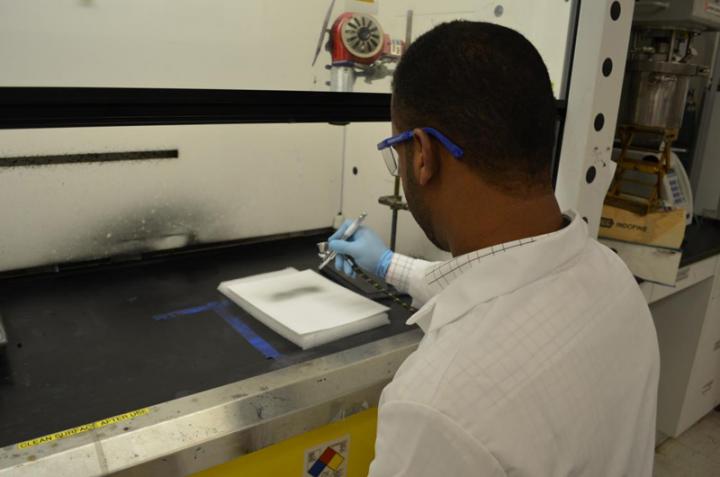The challenge of building an energy future that preserves and improves the planet is a massive undertaking. But it all hinges on the charged particles moving through invisibly small materials.
Scientists and politicians have recognized the need for an urgent and substantial shift in the world’s mechanisms of energy production and consumption in order to arrest its momentum toward environmental cataclysm. A course correction of this magnitude is certainly daunting, but a new report in the journal Science suggests that the technological path to achieving sustainability has already been paved, it’s just a matter of choosing to follow it.
The report, authored by an international team of researchers, lays out how research in the field of nanomaterials for energy storage over the last two decades has enabled the big step that will be necessary to make use of sustainable energy sources.
“Most of the biggest problems facing the push for sustainability can all be tied back to the need for better energy storage,” said Yury Gogotsi, PhD, Distinguished University and Bach professor at Drexel University’s College of Engineering and lead author of the paper. “Whether it’s a wider use of renewable energy sources, stabilizing the electric grid, managing the energy demands of our ubiquitous smart and connected technology or transitioning our transportation toward electricity – the question we face is how to improve the technology of storing and disbursing energy. After decades of research and development, the answer to that question may be offered by nanomaterials.”

The authors present a comprehensive analysis on the state of energy storage research involving nanomaterials and suggest the direction that research and development must take for the technology to achieve mainstream viability.
[ad_336]
The Jam
Most all plans for energy sustainability – from the Green New Deal to the Paris Agreement, to the various regional carbon emissions policies – assert the need to reign in energy consumption while also tapping into new renewable sources, like solar and wind power. The bottleneck for both of these efforts is the need for better energy storage technology.
The problem with integrating renewable resources into our energy grid is that it’s difficult to manage energy supply and demand given the unpredictable nature of…nature. So, massive energy storage devices are necessary to accommodate all the energy that is generated when the sun is shining and the wind is blowing and then be able to disburse it quickly during high energy-use periods.
“The better we become at harvesting and storing energy, the more we’ll be able to use renewable energy sources that are intermittent in nature,” Gogotsi said. “Batteries are like the farmer’s silo – if it’s not large enough and constructed in a way that will preserve the crops, then it might be difficult to get through a long winter. In the energy industry right now, you might say we’re still trying to build the right silo for our harvest – and that’s where nanomaterials can help.”
The Fix
Unstopping the energy-storage logjam has been a concerted goal for scientists who apply engineering principles to creating and manipulating materials at the atomic level. Their efforts in the last decade alone, which were highlighted in the report, have already improved the batteries that power smartphones, laptops and electric cars.
“Many of our greatest achievements in energy storage in recent years are thanks to the integration of nanomaterials,” Gogotsi said. “Lithium-ion batteries already use carbon nanotubes as conductive additives in battery electrodes to make them charge faster and last longer. And an increasing number of batteries use nano-silicon particles in their anodes for increasing the amount of energy stored. Introduction of nanomaterials is a gradual process and we will see more and more nanoscale materials inside the batteries in the future.”
Battery design, for a long time, has been based primarily on finding progressively better energy materials and combining them to store more electrons. But, more recently, technological developments have allowed scientists to design the materials of energy storage devices to better serve these transmission and storage functions.

This process, called nanostructuring, introduces particles, tubes, flakes and stacks of nanoscale materials as the new components of batteries, capacitors and supercapacitors. Their shape and atomic structure can speed the flow of electrons – the heartbeat of electrical energy. And their ample surface area provides more resting places for the charged particles.
The effectiveness of nanomaterials has even allowed scientists to rethink the basic design of batteries themselves. With metallically conducting nanostructured materials ensuring that electrons can freely flow during charge and discharge, batteries can lose a good bit of weight and size by eliminating metal foil current collectors that are necessary in conventional batteries. As a result, their form is no longer a limiting factor for the devices they’re powering.
[rand_post]
Batteries are getting smaller, charging faster, lasting longer and wearing out slowly – but they can also be massive, charge progressively, store huge amounts of energy for long periods of time and distribute it on-demand.
“It is a very exciting time to work in the area of nanoscale energy storage materials,” said Ekaterina Pomerantseva, PhD, an associate professor in the College of Engineering and coauthor of the paper. “We now have more nanoparticles available than ever – and with different compositions, shapes and well-known properties. These nanoparticles are just like Lego blocks, and they need to be put together in a smart way to produce an innovative structure with performance superior of any current energy storage device. What makes this task even more captivating is the fact that unlike Legos, it is not always clear how different nanoparticles can be combined to create stable architectures. And as these desired nanoscale architectures become more and more advanced, this task becomes more and more challenging, triggering the critical thinking and creativity of scientists.”
The Future
Gogotsi and his coauthors suggest that capitalizing on the promise of nanomaterials will require some manufacturing processes to be updated and continued research on how to ensure the materials’ stability as their size is scaled up.

“The cost of nanomaterials compared to conventional materials is a major obstacle, and low-cost and large-scale manufacturing techniques are needed,” Gogotsi said. “But this has already been accomplished for carbon nanotubes with hundreds of tons manufacturing for needs of battery industry in China. Preprocessing the nanomaterials in this way would allow the use of current battery manufacturing equipment.”
They also note that the use of nanomaterials would eliminate the need for certain toxic materials that have been key components in batteries. But they also suggest establishing environmental standards for future development of nanomaterials.
“Whenever scientists consider new materials for energy storage, they should always take into account toxicity to humans and environment, also in case of accidental fire, incineration or dumping into waste,” Gogotsi said.
What this all means, according to the authors, is that nanotechnology is making energy storage versatile enough to evolve with the shift in energy sourcing that forward-looking policies are calling for.